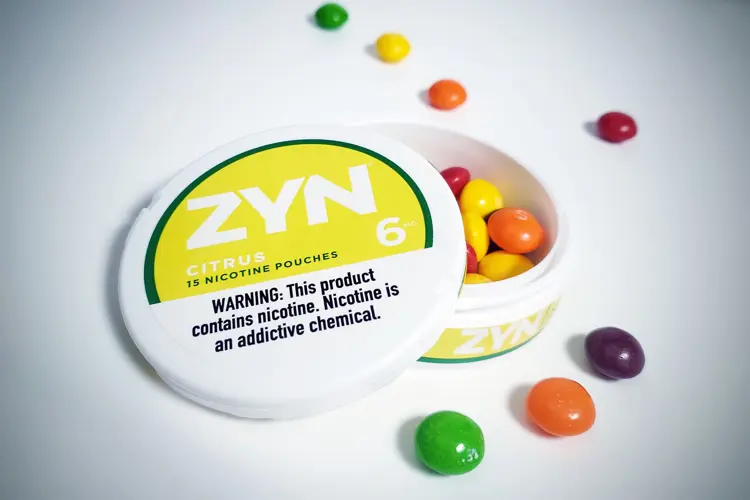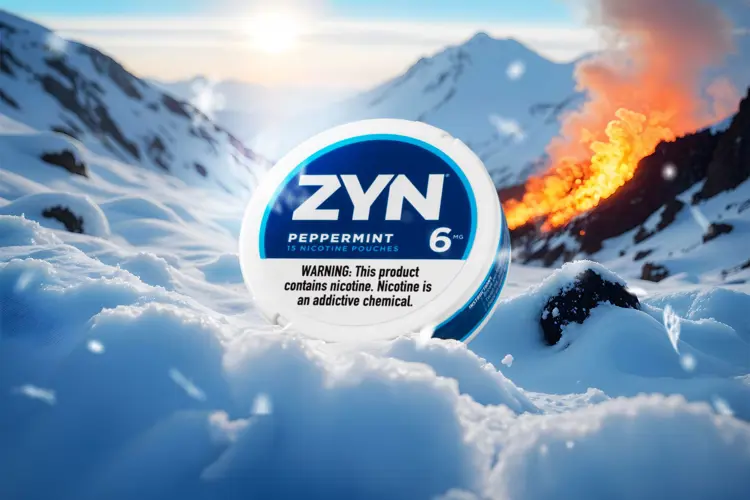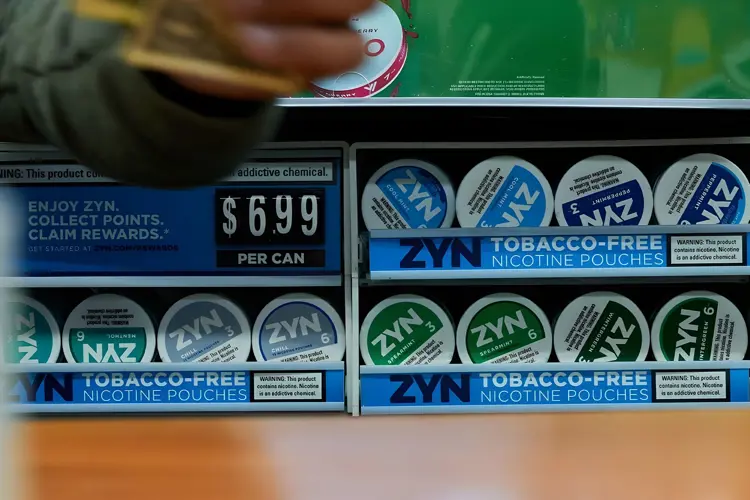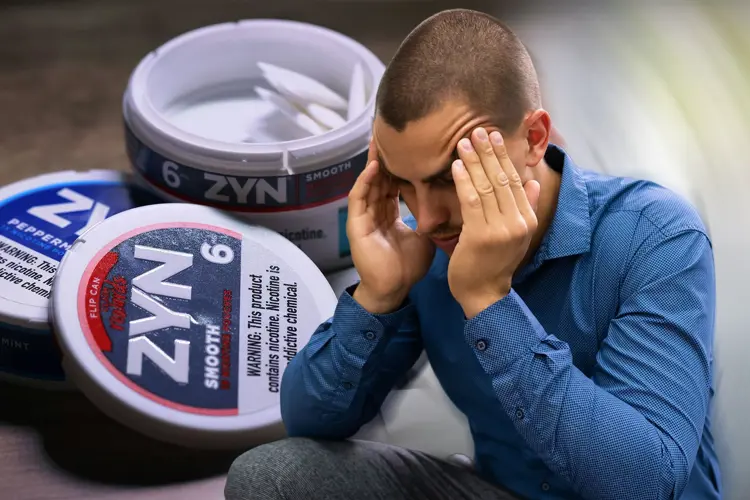What is popcorn lung?
Popcorn lung is a slang name for a serious condition with the scientific name bronchiolitis obliterans, or obliterative bronchiolitis. Sometimes the name is abbreviated as BO, and it is occasionally called constrictive bronchiolitis.
Popcorn lung is caused when the smallest airways within the lungs (bronchioles) are scarred, and their capacity and efficiency are reduced. There is no cure for the condition except a lung transplant.
Bronchiolitis obliterans can result from a variety of medical and environmental causes. The bronchioles can become inflamed and damaged from viral, bacterial and fungal infections, or by inhalation of chemical particles. Although diketones like diacetyl are the chemicals most often associated with popcorn lung, the National Institutes of Health list several other chemicals that can cause it, including chlorine, ammonia, sulfur dioxide, and inhaled metal fumes from welding.
And despite being the only real popcorn lung cure, lung transplants themselves can cause it too. In fact, bronchiolitis obliterans syndrome (BOS) is the single largest cause of chronic lung transplant rejection.
What are the symptoms of popcorn lung?
In a bronchiolitis obliterans victim, the scarring of the lung tissue blocks the airways and prevents the lungs from functioning properly. The symptoms are very similar to those of chronic obstructive pulmonary disease (COPD), but bronchiolitis symptoms can appear within just 2-8 weeks, while COPD typically takes many years or even decades to develop. Early obliterative bronchiolitis symptoms include:
- A dry cough
- Shortness of breath
- Reduced activity tolerance
- Wheezing (without a cold or asthma)
- Fatigue
Although popcorn lung is an incredibly rare disease, the early symptoms are similar to a common cold. Over a period of weeks or months, those symptoms progress and become more severe. Eventually the disease causes a variety of severe problems with breathing and absorption of oxygen. Untreated, popcorn lung causes death from respiratory failure within months or years.
There is no cure for popcorn lung, but treatment can sometimes slow its progression. Depending on the cause, popcorn lung is sometimes treated with antibiotics, immunosuppressive drugs, or corticosteroids. Cough medication or oxygen may be given to help manage symptoms. Severe cases may require a lung transplant.
Popcorn lung can be difficult to diagnose. Although CT scans and pulmonary function tests can offer strong clues, the only truly reliable way to identify the disease is through a surgical lung biopsy. And sometimes multiple biopsy samples are required to be certain.
Why is it called popcorn lung?
In 2002, the Centers for Disease Control and Prevention (CDC) documented eight cases of lung disease in employees who had worked in a Missouri popcorn factory between the years 1992 and 2000. Investigation showed that those with the worst lung damage had spent considerable time mixing a flavoring chemical called diacetyl with hot oil in large industrial vats.
Although the popcorn workers who were diagnosed with obliterative bronchiolitis had severe and irreversible lung damage, the National Institute for Occupational Safety and Health (NIOSH, an agency within the CDC) found that the workers at the factory showed a spectrum of injury to the lungs probably caused by the flavoring chemicals. Not every affected employee had untreatable lung obstruction.
The diagnosis of bronchiolitis obliterans in the widely publicized cases earned the disease the nickname popcorn lung. In fact, bronchiolitis is so associated with the popcorn factory cases that many people don’t know that popcorn lung can have many causes other than diacetyl.
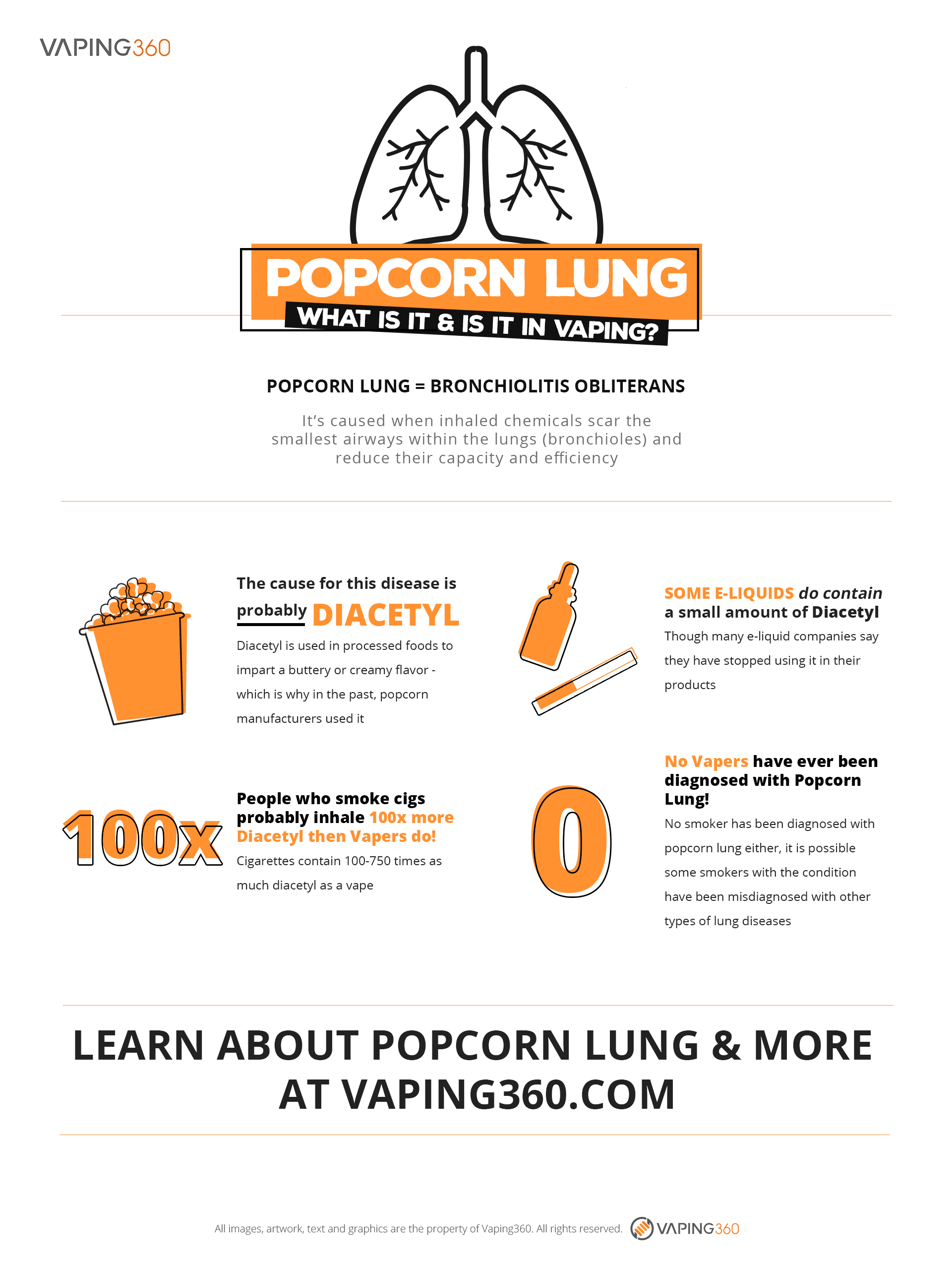
What is diacetyl?
Diacetyl is an organic compound that occurs naturally in fermented products like alcoholic drinks and in cultured milk products. It’s also found naturally in some fruits and tobacco. Diacetyl is widely used as a flavoring in processed foods because of its buttery taste and ability to enhance sweet flavors. It was commonly used as an additive in “butter-flavored” microwave popcorn, consumed by millions the world over. After the popcorn lung investigations, most manufacturers stopped using butter flavoring with diacetyl.
Diacetyl is also known as 2,3-butanedione. It’s part of a chemical family called diketones. The other popular diketone used as a flavoring is acetyl propionyl, also known as AP or 2,3-pentanedione. A related flavoring chemical, acetoin, is a ketone (but not a diketone), and has similar properties.
Diacetyl and AP pose no known dangers when ingested. The FDA designates both chemicals “generally recognized as safe” (GRAS), meaning there have been no observed negative health outcomes from eating or drinking them. However, inhaling diacetyl and similar flavorings—at least in large quantities, like the popcorn factory mixers did—can cause irreversible lung damage.
Popcorn lung, or bronchiolitis obliterans, is famously caused by industrial diacetyl fumes, and acetyl propionyl is likely just as dangerous. The CDC refers to obliterative bronchiolitis and related lung conditions as “flavorings-related lung disease,” and has published occupational exposure standards for diacetyl and other diketones.
Is there diacetyl in vapes?
There can be diacetyl in e-liquid. It’s not always present, but it is in some e-liquids on the market. The source of diacetyl and AP in e-liquids is the flavorings used to make them. The most obvious ones are e-juices with buttery flavors, like custards and other sweet desserts. But some candy- and fruit-flavored e-liquids and even tobacco flavors can also contain diketones like diacetyl.
E-cigarette users have had concerns about diacetyl and health to vapers almost since vaping began, but the topic was first addressed scientifically in a 2014 paper by cardiologist Konstantinos Farsalinos and three colleagues. Their research found diacetyl and AP in a large number of sweet-flavored e-liquids, and deemed the diketones “an avoidable risk.” After the study, there was heated debate in the vaping community that resulted in many companies—but not all—reformulating their products. And not all vapers even wanted them to.
For vapers concerned about diacetyl, there are some companies recognized for their diketone-free formulations. And if you live in the U.K. or European Union, diacetyl is prohibited as an ingredient in nicotine-containing e-liquid.
Does vaping cause popcorn lung?
There has never been a proven case of popcorn lung caused by vaping, although there have been many news stories that suggest vaping can cause it. There’s no evidence to support vaping as a cause of popcorn lung, in any vaping studies or otherwise, but maybe diacetyl exposure from cigarette smoking may provide some insight about the risk. Cigarette smoke contains at least 100 times as much diacetyl as the highest levels in any vaping product, yet smoking is not associated with popcorn lung.
Despite the one billion smokers in the world who inhale diacetyl regularly from cigarettes, no smoker has been diagnosed with popcorn lung. In fact, the few smokers known to have contracted popcorn lung were workers in a popcorn factory. According to NIOSH, smokers with bronchiolitis obliterans exhibit a discernibly more severe kind of lung damage than smokers with the usual (though still terrible) smoking-caused respiratory diseases like emphysema or chronic bronchitis.
Despite the well-known risks of smoking, popcorn lung is not one its outcomes. Of course, lung cancer, heart disease, and chronic obstructive pulmonary disease (COPD) are associated with smoking from inhalation of carcinogenic compounds, tar, and carbon monoxide. But vapes don’t involve combustion, so they don’t produce any tar or carbon monoxide—and in the worst-case scenario, they only contain about one percent of the diacetyl that’s in cigarettes. While almost anything is possible, there’s simply no evidence that vaping causes popcorn lung.
President Trump promised during his election campaign to “save vaping," but his administration has undermined that goal at every turn.
The U.S. disposable vape market has grown to $2 billion in annual sales, although nearly none of the products are authorized by the FDA.
More than 30 bills that would impose severe restrictions vaping consumers’ product choices remain active in U.S. state legislatures.
The Freemax REXA PRO and REXA SMART are highly advanced pod vapes, offering seemingly endless features, beautiful touchscreens, and new DUOMAX pods.
The OXVA XLIM Pro 2 DNA is powered by a custom-made Evolv DNA chipset, offering a Replay function and dry hit protection. Read our review to find out more.
The SKE Bar is a 2 mL replaceable pod vape with a 500 mAh battery, a 1.2-ohm mesh coil, and 35 flavors to choose from in 2% nicotine.








